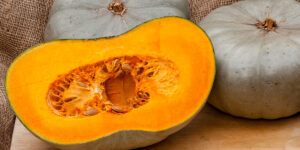Pumpkin
Pumpkin cultivation in Gauteng, a province in South Africa, benefits from the region’s distinct seasonal variations and generally favorable climate for vegetable growing. Pumpkins are a popular crop in this area, both for local consumption and for markets. Here’s an overview of pumpkin growing in Gauteng, including varieties, growing season, and cultivation practices:
Climate and Soil Requirements
Gauteng features a high-altitude, inland climate with hot summers and mild to cold winters. This climate is generally conducive to growing a wide range of pumpkin varieties. Pumpkins require well-drained, fertile soil with a pH between 6.0 and 6.8. The province’s soil types can vary greatly, so amendments such as compost may be necessary to meet these conditions.
Varieties
Several pumpkin varieties are suitable for cultivation in Gauteng, including both indigenous and international breeds. Popular varieties include:
Planting Season
Pumpkin seeds are typically sown in Gauteng from late summer to early autumn (February to April). This timing allows the plants to establish themselves before the cold winter temperatures set in and to take full advantage of the warmer spring weather for growth, leading to harvest in late spring to summer.
Cultivation Practices
Preparation: The soil should be well-prepared with organic matter to ensure good drainage and fertility. Pumpkins are heavy feeders, so soil enrichment is essential.
Watering: Pumpkins require consistent moisture, especially during the flowering and fruit development stages. However, overwatering can lead to root rot and other fungal diseases.
Spacing: Plants should be spaced sufficiently apart to allow for sprawling growth; this varies by variety but can be up to 2 meters between plants for larger varieties.
Pest and Disease Management: Common pests include squash bugs and cucumber beetles, while diseases like powdery mildew can be managed through proper spacing and airflow around the plants.
Harvesting
Pumpkins are usually ready for harvest in Gauteng from late spring to early summer, depending on the sowing time and variety. Indicators for maturity include hardening of the skin and the stem becoming corky and beginning to detach from the fruit.
Challenges
Growing pumpkins in Gauteng can face challenges such as unexpected late frost, which can damage young plants, and prolonged rain, which can lead to fungal diseases. Seasonal pest control is also necessary to ensure a healthy crop.
Uses and Markets
Pumpkins are grown in Gauteng for various uses, including culinary purposes, livestock feed, and for sale in local and national markets. The nutritional value and versatility of pumpkins make them a staple in many South African diets, with uses ranging from traditional dishes to contemporary culinary applications.
Pumpkin cultivation in Gauteng is a testament to the adaptability of this crop to various climates and conditions, offering valuable agricultural opportunities and contributing to the dietary needs of the region.
Showing all 2 results


